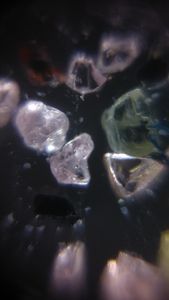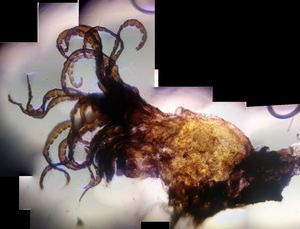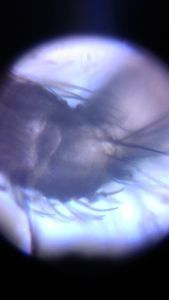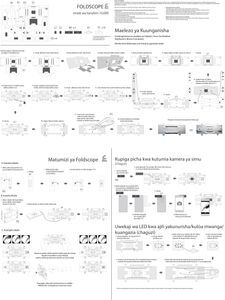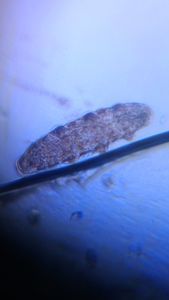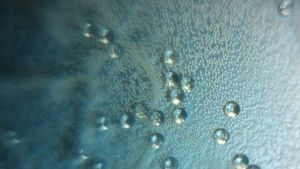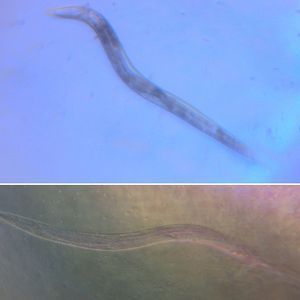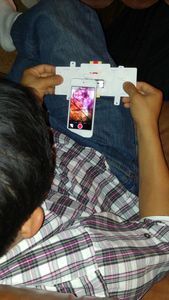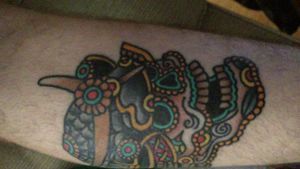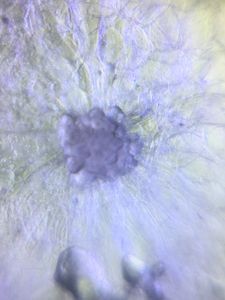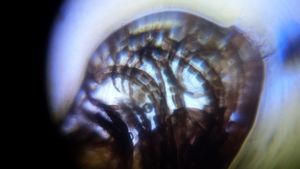The Foldscope tree of life
 Jul 25, 2015 • 5:04 PM UTC
Jul 25, 2015 • 5:04 PM UTC Unknown Location
Unknown Location 140x Magnification
140x Magnification Unknown
Unknown
Tom Hata
Learn about the author...
17posts
18comments
3locations

Above is the tree of life, so far, as chronicled by our amazing Foldscope community! Currently represented in our 800+ posts so far are over 150 species from over 75 orders. I hope you take a second to find the small space that we occupy on this tree and appreciate the vast diversity of microstructures and body plans that form the rest of this budding web. There were almost too many beautiful images to chose from, so represented in this collage is just a small fraction of community-created content. In case anyone is curious, there are just 2 species of bacteria identified in our posts and none yet from the kingdom of Archaea! The rest of the posts, of course, are Eukaryotes (some fungi, but mostly plants and animals).
Now that we’re on our way to creating a rich database of observations, I have a couple of open challenges for the community:
1. For those interested in a particular group of living things (e.g., ants, fungi, flowering plants) I challenge you to search for the posts containing these living things and identify them the best you can. Create your own ID guide using Foldscope pictures!
2. Find an organism that’s not yet represented here and document it. We’d love to see how far the Foldscope tree of life can be filled out!
In case anyone would like to know how to make a tree of life like this:
1. I manually combed through ALL of the Foldscope posts so far, recording (when available) the common and scientific names of the specimens (and their phylogenetic information such as kingdom, phylum, class, order, etc.) in a google spreadsheet.
2. I exported the column containing the ORDERS of each specimen as a .txt.
3. I Uploaded this file to NCBI’s taxonomy browser ( http://www.ncbi.nlm.nih.gov/Taxonomy/CommonTree/wwwcmt.cgi ) to create a text version of the tree of life.
4. I exported this data as a phylip tree (under the save as function), which exports the data in Newick tree format.
5. I uploaded my data to the Interactive Tree of Life (iTOL http://itol.embl.de/ ).
6. I edited and exported this tree as an Adobe Illustrator file.
7. Prettied it up and added the Foldscope images in Illustrator and Photoshop.
For those in the community with expertise in generating phylogenetic trees, I would love tips! This trial-and-error method was a great learning experience to create a one-off tree, but we are always thinking of new features to add as the community grows. One potential idea I have in mind would be a dynamic Foldscope web of life accessible from the front page.
-Tom
Now that we’re on our way to creating a rich database of observations, I have a couple of open challenges for the community:
1. For those interested in a particular group of living things (e.g., ants, fungi, flowering plants) I challenge you to search for the posts containing these living things and identify them the best you can. Create your own ID guide using Foldscope pictures!
2. Find an organism that’s not yet represented here and document it. We’d love to see how far the Foldscope tree of life can be filled out!
In case anyone would like to know how to make a tree of life like this:
1. I manually combed through ALL of the Foldscope posts so far, recording (when available) the common and scientific names of the specimens (and their phylogenetic information such as kingdom, phylum, class, order, etc.) in a google spreadsheet.
2. I exported the column containing the ORDERS of each specimen as a .txt.
3. I Uploaded this file to NCBI’s taxonomy browser ( http://www.ncbi.nlm.nih.gov/Taxonomy/CommonTree/wwwcmt.cgi ) to create a text version of the tree of life.
4. I exported this data as a phylip tree (under the save as function), which exports the data in Newick tree format.
5. I uploaded my data to the Interactive Tree of Life (iTOL http://itol.embl.de/ ).
6. I edited and exported this tree as an Adobe Illustrator file.
7. Prettied it up and added the Foldscope images in Illustrator and Photoshop.
For those in the community with expertise in generating phylogenetic trees, I would love tips! This trial-and-error method was a great learning experience to create a one-off tree, but we are always thinking of new features to add as the community grows. One potential idea I have in mind would be a dynamic Foldscope web of life accessible from the front page.
-Tom
Sign in to commentNobody has commented yet... Share your thoughts with the author and start the discussion!
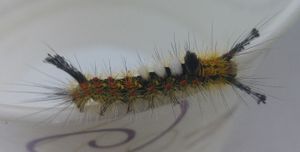
 0 Applause
0 Applause 0 Comments
0 Comments